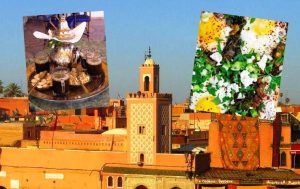The first sight of a quetzal in the wild is unforgettable. It is one of the most enigmatic and elusive birds in the world. It is a symbol, a nation.
The Guatemalan high forests are mysterious, others say mystic. This forest, a green belt of dense jungle crowning the Maya Forest, in a region shared by Mexico, Guatemala, Belize and Brazil’s Matto Grosso, is considered one of the ‘lungs of the Americas’. The lushness of the forest provides a large and essential portion of the Western Hemisphere’s oxygen.
The name Guatemala derives from the Maya-Toltec word Goathemala, ‘Land of Many Trees’. This forest is home to more than 350 bird species and almost 1,000 different mammals, including jaguars, tapirs and monkeys, all thriving in a primeval wilderness overflowing with more than 1,600 plant varieties.
The forests are ageless. Great civilisations flourished and collapsed in their foothills, but the forest lingered unsullied until modern demands began to drastically slash its vastness. And it is here, usually at daybreak, when one of the most remarkable, enigmatic, and elusive birds in the world – the resplendent quetzal – makes a fleeting appearance to dispel one of the countless myths surrounding it, this avian Guatemalan treasure sings. The song is unmistakable and unforgettable and in order to hear it, one must trek up to the cloud forest of Guatemala, a country with quetzal birds so common that it is the national symbol and its visage graces the flag, Guatemalan currency takes its name from it, and even the map of the country, if you use your imagination, resembles the shape of a quetzal in profile.
The bird, a member of the trogon family, is endemic and exclusive to the cloud forest of Mesoamerica, the region reaching across the Mexican highlands of Chiapas and Oaxaca to the Panamian Isthmus. Some ornithologists consider it the most beautiful bird in the world, and because it is elusive, reclusive, temperamental, delicate, and shy, it finds itself in acute danger of extinction due to encroaching farmlands and the slash-and-burn farming methods used in Latin America. No country in the world is as closely identified with the quetzal as Guatemala. Some argue that the Guatemalan species is the only true quetzal because the bird, its myths, and its legends go hand-in-hand with the Maya. As well, civilisation’s influence never reached as far south as Costa Rica. Regardless, it is the quetzal’s beauty along with those ancient myths and legends that never fail to enthral. The Quiche Maya give the quetzal a prominent place in the first chapter of the Popol Vuh, the Maya term that describes the creation of the universe by ancient gods. Maya, Toltecs, and Aztecs considered its feathers – a commodity they reserved exclusively for royalty, considered to be a thousand fold more valuable than gold and jade. As a result, killing a quetzal was punishable by death in all three cultures.
The Maya, captivated by its beauty, referred to the bird as the ‘God of the Air’. Its yard-long tail feathers were woven in royal ceremonial dresses, capes, and artwork. Highland hunters, despite the lightning speed of the quetzal, stunned them, plucked the long feathers, and then released them. Today, the most astonishing example of the feather’s beauty reposes half way across the world in Vienna’s Museum of Ethnology. It has more than 450 quetzal feathers, each measuring about a yard, all mounted on a jewel and gold-encrusted crown. The headdress is said to have been worn by Aztec emperor Moctezuma when first meeting Hernan Cortes at Tenochtitlan. The headdress arrived in Europe as part of the items sent back by Cortes after his 1519 conquest. It was later inherited by Austria’s Archduke Ferdinand and it remains “an archaeological piece of incalculable value for the history of our nation”, said the Mexican minister of culture.
Some Mexicans consider it their country’s single most important Aztec relic and negotiations between Austria and Mexico continue to this day over the return of the spectacular and priceless work of art to the Mexican capital.
At least once in a lifetime
In Guatemala, where the bird is firmly entrenched in the national psyche, finding this most reclusive and timid of birds is tricky business. Moreover, the number of Guatemalan quetzal’s is difficult, if not impossible to measure as no one has done such a study. Finding quetzal’s is purely down to luck and good timing. Some people have seen handfuls in a single day, while others have gone weeks without spotting a single one. There is an old saying that every Guatemalan has seen a quetzal at least once in a lifetime, but even that is a stretch. Most people freely admit that the only glimpse they had of the fabled bird is on the national currency.
Rain is almost constant from the months of May to September, and these are the best months to observe quetzal as this is when the breeding season is in full swing and the males flaunt their brightest plumage hoping to attract females. Quetzals are monogamous, with females choosing males who, unlike most birds, take an active part in hatching the blue eggs laid in abandoned woodpecker holes high up in the trees.
The bird is lightning quick, flying in an undulating motion made bottom heavy by its impossibly long and marvellous tail feathers. Although it disappears in a second, the first sight of a quetzal in the wild is unforgettable.








